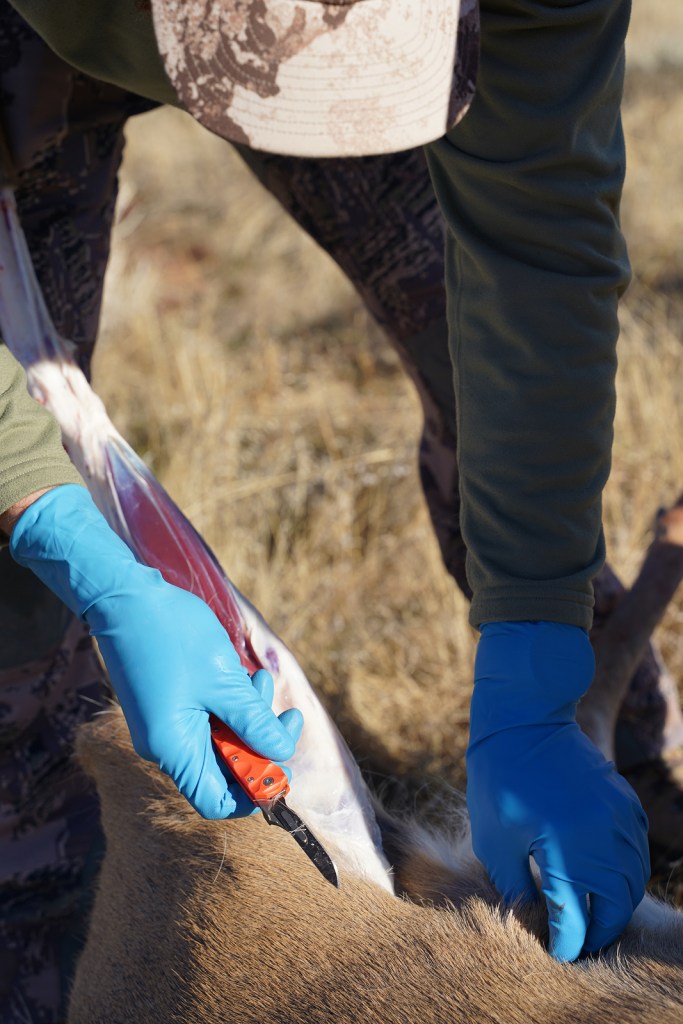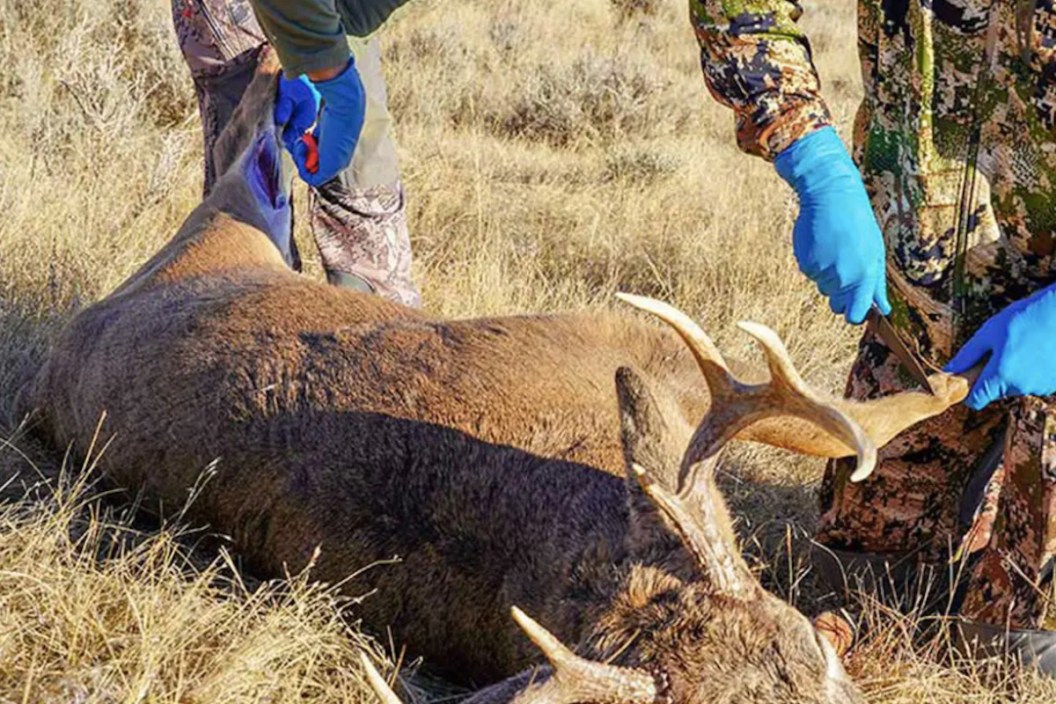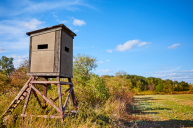If there is anything we as outdoorsmen and women can agree upon, it's that we like to disagree. The subjects are endless: caliber size for deer hunting, climber vs. ladder stand, rifle, shotgun, or bow, and anything else we may have found that works for each of us. Sharing that information can sometimes come with an argument, but among the outdoors community, a difference of opinion is like the water that floats the duck. Can't seem to have one without the other.
When it comes to safety, we should actually listen intently to each other while reserving our own opinion until the time is right. There's almost no argument about treestand safety, firearm safety, and the other basic tenets of hunting in the wilderness, but there are still a few things that can be considered up for healthy debate, and that's a good thing. As an example, do you wear gloves when you field dress a deer?
Let's look into the two methods of field dressing a deer - gloved or bare-handed - and maybe try to clear some things up along the way. Consider it a PSA, because there are good reasons to pick up the habit of wearing gloves if you don't.
The Case for Field Dressing a Deer With Gloves

Overall Field Dressing Safety
We can get one thing out of the way early: standard rubber gloves often used for field dressing will not stop the blade of a good, sharp knife from slicing into your skin unless you opt for cut-resistant hand coverings. Cut-resistant arm coverings may also be used, but unless you are a deer processor cutting for many hours a day, it seems like a bit of overkill.
The best way to field dress a deer is to slow down and take the time to be sure of each and every action. The excitement of hunting success is one of the best feelings we know of as deer hunters. But if there is one universal thing among us in the hunting community, it is the fact that a hurried job can result in wasted meat, and no one wants that.
Why Using Gloves Matters
It's possible hunters first began to use gloves to field dress their deer for a straightforward reason: keeping the mess of blood off their hands, especially since finding water to clean up in the woods isn't always easy. You could also have cuts or scratches on your hands that you may not know about, leaving you open to infections such as brucellosis. there are plenty of good reasons to wear them. Even Michigan State warned hunters about the dangers of field-dressing deer without gloves.
Then there are the ticks and other parasites. Liver fluke and lungworm can infect whitetail deer and tapeworms, but the worst of all these are the black-legged ticks, more commonly referred to as deer ticks. The truth is that gloves or not, you still stand the risk of having one of these blood-sucking parasites crawl off the deer you are working on and onto your clothing. Ticks have a much harder time traversing the latex that most field dressing gloves are made of, even more so if they are shoulder length.
Why Gloves Might Not Matter
If you ask five deer hunters their thoughts on field dressing, you will get five different answers, but most will say that they use gloves to field dress a deer. I've gutted every one of the hundreds of wild game birds I ever shot with bare hands, but let's remember: that is different than field dressing a big game animal like a whitetail deer.
It can be argued that it's harder to field dress a deer with gloves on, latex or not. There's a certain level of feel that you need while executing those cuts, and I can understand some hunters making that point. But it's not that big of an adjustment, and one that should just be made for the sake of safety.
Currently, there are no known cases of serious, neurological diseases spreading from deer to humans. Still, with the availability of gloves, some meant specifically for hunters who are field dressing animals, there isn't a very good excuse. They might not matter, but they also might wind up playing a small role in overall prevention and good hygiene.
Please check out my book "The Hunter's Way" from HarperCollins. Be sure to follow my webpage or on Facebook and YouTube.




